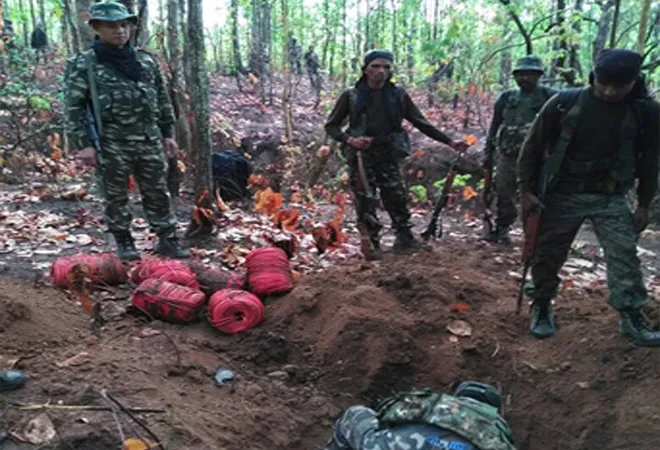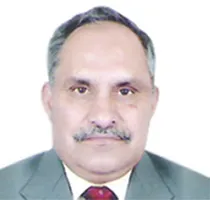Our police and various forces are capable of tackling serious insurgencies. But they are badly led and poorly trained. They lack not manpower but organisational ethos
Our political class is yet to learn from our own history that we were subjugated over centuries because those in power were unwilling to accept that in a battle, victory depends less on numbers and more on organisational ethos, training, leadership and motivation. The fact that the Central Reserve Police Force (CRPF) has expanded from two battalions in 1939 to 235 presently, with another 12 to be raised by 2019, hardly helps matters since neither has it led to an improvement in our internal security situation, nor has it prevented the Maoists from conducting debilitating attacks against them repeatedly, almost at will.
The latest incident being the incident at Sukma in Chhattisgarh, where a company sized force was ambushed recently and lost 25 constables. Incidentally, each CRPF battalion has a strength which is one and a half times the strength of the standard Infantry Battalion the Army deploys with minimal differences in the weapons profile.
What this recent massacre indicates is the reality — that in its existing avatar, the CRPF is incapable of tackling not just the Maoist menace but also insurgencies — in Kashmir and elsewhere. While the Union Home Minister and others may want us to believe that intelligence failure was the root cause that led to the ambush, the truth lies elsewhere. It speaks poorly of any unit that while deployed for a road opening operation, supposedly concentrates at one place for a picnic lunch without ensuring its own protection.
That was not just an isolated case of non-adherence to Standard Operating Procedures, but an utter lack of professionalism and absence of leadership. It is an unfortunate but indisputable fact that the CRPF is a badly led, poorly trained force wholly lacking in motivation and low on morale.
Instead of wasting time deploring the “cowardly attack”, the Prime Minister and the Home Minister should be asking those responsible as to how is it possible for the Maoists to move around in strength? Reportedly 300 Maoists were involved in the recent attack, despite 25 CRPF battalions, the equivalent of nearly four infantry divisions being deployed for counter insurgency operations in Chhattisgarh. Obviously, this indicates that “ neither a counter-insurgency grid nor any posts in the hinterland have been established to dominate the affected area.
That is also the only feasible way in which hearts and minds of the local population can be won and actionable intelligence obtained.
The non-performance of the CRPF is not because of the quality of manpower that it inducts, undoubtedly on more than one occasion some of them have given us ample reason to extol their bravery and sacrifice, but the lack of an appropriate organisational ethos.
Conduct of counter-insurgency operations, which appears to have become their primary task, requires skilled and experienced leaders, both at the junior and senior levels.
In addition, regimentation, esprit de corps and team spirit are of immense importance. Importantly, the CRPF is manned at the Deputy Inspector General of Police and higher levels by those on deputation from the Indian Police Service for limited tenures.
Unfortunately, these officers have neither the experience at lower levels in a counter-insurgency environment, nor any understanding of the organisational ethos that needs to be developed and strengthened if they are to achieve success in combat.
Nothing can be more illustrative of this fact than the recent incident that made headlines: The ‘state funeral’ cortege of a martyred CRPF constable being halted while Bihar Chief Minister Nitish Kumar’s convoy whizzed past.
Obviously, the local Police Chief, who must have been making the bandobust for both these events, clearly showed where his preferences lay by giving priority to the passage of the Chief Minister’s entourage. To expect our political masters to behave any differently would be unrealistic, but what does it tell us about our police hierarchy?
Clearly their servility to their masters and utter lack of empathy towards their own uniformed comrades, howsoever tragic the situation, clearly indicates an emphasis on the individual rather than the team.
An ethos completely at variance from that required, if the CRPF is to succeed. Clearly until its leadership profile is not changed it is unlikely to perform any better.
The bitter truth that Prime Minister Narendra Modi and his Government now must confront is that not only are their policies for countering insurgencies rapidly falling apart, but they also face an increasingly restive and angry military; unhappy at having been denied its rightful dues by the Seventh Central Pay Commission (CPC) with its standing being further downgraded.
Clearly, the deliberate and concerted policy of this Government to bring down the Armed Forces a notch or two by enhancing the standing of the Central Armed Police Forces (CAPF) at their cost, is now floundering.
Nothing else can otherwise explain the Defence Ministry’s vehement opposition to the grant of Non Functional Financial Upgradation (NFFU) to the military despite the Armed Forces Tribunal having directed that it be implemented.
It also explains the reluctance of the Government to rectify the core objections raised against the recommendations of the Seventh Pay Commission and its non-implementation till date. At the end of the day the Government may just find that just like the CAPF, it has hollowed out the Armed Forces to such an extent that they will not be able to deliver the goods when required. This, even as our internal and external security situation rapidly deteriorates.
Finally, if the Government’s cup of woes was not already full, the Supreme Court has added to its difficulties by severely restricting the legal cover that the Armed Forces enjoyed under the Armed Forces (Special Powers) Acts. The Army hierarchy, if it is to be true to its salt, has little choice but to cease counter-insurgency operations and order troops back to their barracks.
It cannot let those young officers and men at the cutting edge be thrown to the wolves and face legal action for life and death decisions taken in good faith, as is likely to be faced by the officer who tied a stone-pelter to his jeep to avoid having to open fire while evacuating trapped Police and the Election Commission officials from a polling station in the Kashmir valley.
If the Army’s return to barracks leads to enhanced violence and the breakdown of governance, so be it. As with every constitutional authority, even the Supreme Court will finally have to answer to the people for its actions.
This commentary originally appeared in Daily Pioneer.
The views expressed above belong to the author(s). ORF research and analyses now available on Telegram! Click here to access our curated content — blogs, longforms and interviews.




 PREV
PREV


